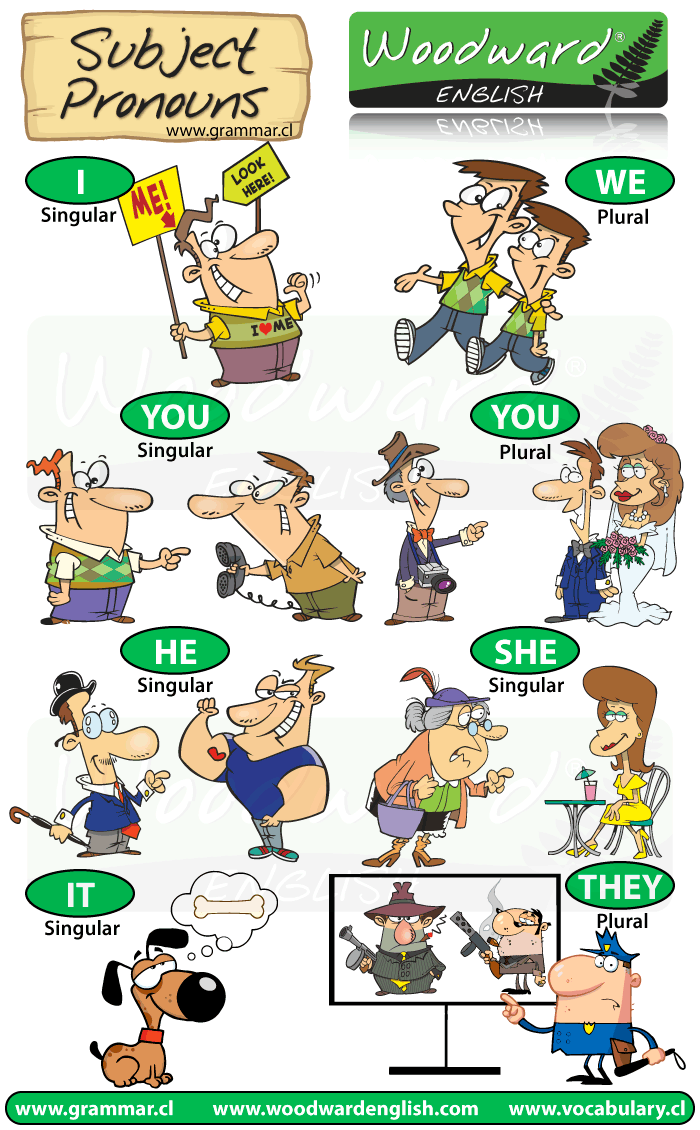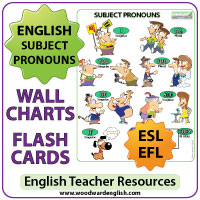Subject Pronouns
English Grammar
The subject of a sentence is a person or thing that performs the action of the verb.
Subject pronouns are used to replace the subject (person or thing) of a verb.
We do NOT normally say:
- John is tall and John is intelligent.
Saying the word "John" twice is repetitive and does not sound natural.
We replace the Subject (John) that appears the second time with a subject pronoun to avoid repetition (and in this case to avoid saying the name John again.)
So we would say:
- John is tall and he is intelligent.
We replace the second "John" with the Subject Pronoun "He".
What are the subject pronouns in English?
These are the subject pronouns we use in English
| Subject Pronoun | Singular or Plural - Who? | Masculine or Feminine |
|---|---|---|
| I | Singular - first person | masculine or feminine |
| You | Singular - second person | masculine or feminine |
| He | Singular - third person | only masculine |
| She | Singular - third person | only feminine |
| It | Singular - third person | object / thing / animal |
| We | Plural - first person | masculine or feminine |
| You | Plural - second person | masculine or feminine |
| They | Plural - third person | masculine or feminine |
When do you use IT?
IT is normally used when we refer to objects, things, animals or ideas (and not normally people).
- The dog is big. It is also hairy. (It = the dog)
- My bed is small but it is comfortable. (It = my bed)
Sometimes when we don't know the sex of a baby (we don't know if it is a boy or girl), then we can use IT.
- Their baby is very small. It only weighs 2 kilos. (It = the baby.)
We use IT when we talk about the time, weather or temperature.
- It is five o'clock (= the time is five o'clock)
- It is cold today. (= the weather is cold today.)
- It is 30º outside right now. (= the temperature is 30º outside right now)
Subject Pronouns for absolute beginners
Subject Pronouns Chart
Here is a chart with cartoons showing the different Subject Pronouns we use in English:

Next activity
See our notes about Object Pronouns to compare the difference.
English Teacher Resource
We have a version of this Subject Pronouns chart that English Teachers (and parents) can use with their students. There is the full chart (a better version of the one above) as well as individual charts of one pronoun per A4 page (great for decorating the classroom wall). You can find it here:

If you found this grammar guide about Subject Pronouns in English useful, let others know about it.
